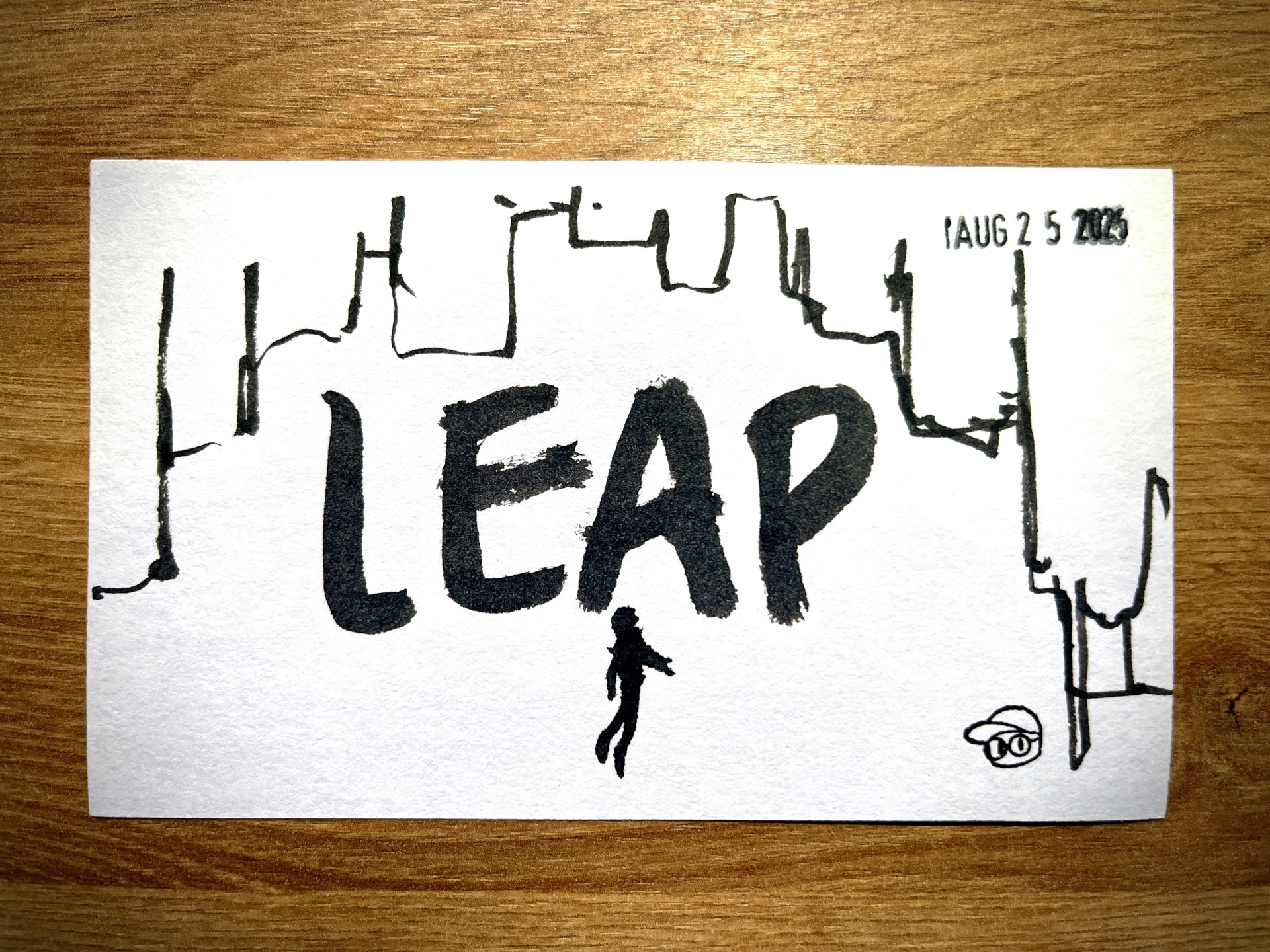Every now and then—pretty often, actually—my coworkers ask me: How do I know what to do? When to act? When to hold back? When to take a stand? When to fallback? When to leap?
The classic one: “How do we know what good looks like?”
That’s where it gets tricky. Because that question can spiral fast. You start layering on frameworks, models, endless exercises. And before long, the mission shifts—it’s about the process instead of the product.
So where does the answer actually come from?
Maybe it’s the mountain of notes I’ve collected over the years. Maybe it’s lessons pulled from past work, side projects, hobbies. Maybe it’s the stack of scrappy prototypes I’ve built along the way. Maybe it’s all of it. Or maybe none of it at all.
The Four
There’s a common way of framing decisions: your head, your heart, and your gut. Logic. Emotion. Intuition.
To that, I add a fourth: your hands—the ability to actually do the thing. To execute.
For me, the intersection of head, heart, gut, and hands helps me build an opinion. Not just an idea. An opinion about what to do, who to involve, when to move.
But decisions are never clean. They’re collisions. Head, heart, gut, and hands slamming into each other in the middle of the night. Arguing. Interrupting. Drowning each other out. Logic squaring off with fear. Emotion tugging against execution. Intuition whispering from the back row.
And here’s the thing: confidence and conviction don’t mean much if you can’t actually do the thing. Ideas are worthless until they materialize—until opinions move.
But when you strip it all back—beneath the analysis, the research, the reflection, and the everything else—every decision still comes down to the same thing:
A leap of faith.
Rising
The most powerful articulation of this inner battle—of capability, identity, teamwork, leadership, and more—comes from the 2018 film Spider-Man: Into the Spider-Verse. (In my opinion anyway).
In this movie, you follow the Hero’s Journey of a young Miles Morales, learning how to become Spider-Man from mentors—Spider-people from different universes.
You see their imperfect struggles. Behind every skill, every instinct, every polished move, there’s a mess of lessons shaped by their own stories. Stories that rhyme, but never repeat (not exactly anyway). And Miles? He’s trying to find his own.
He’s drowning in uncertainty. Doubt. Fear. At one point he asks his mentor, Peter B. Parker:
“When will I know I’m ready?”
Peter responds:
“You won’t. It’s a leap of faith. That’s all it is, Miles. A leap of faith.”
And then comes the leap. The most iconic shot from the most iconic scene in the movie. Miles jumps off a skyscraper. The city tilts upside down.
The frame frozen for a split second to visualize what the director describes the moment when:
“He’s not falling through frame—he’s rising.”
What’s Up Danger
When things feel tough, when the world feels loud, when every signal drowns in static and everything around you feels dangerous—pause.
Take a breath. Take a beat. Steady yourself.
Check in with yourself. Check in with the people beside you.
Check in with The Four:
Your head — what you know. The patterns you’ve seen. The lessons carved into memory.
Your heart — what you care about. The fire that makes the risk worth it. The reason you showed up at all.
Your gut — what you feel but can’t yet name. The quiet whisper that cuts through the noise and points the way forward.
Your hands — what you’re capable of shaping. The proof that ideas don’t just live in your head—they can be made real.
Then trust. Trust that you’ll give it everything. Trust that even if the ground feels shaky, you’ll land. Maybe not perfectly. Maybe not gracefully. But you’ll land. Somehow. Someway.
And then—take the leap.
You jump. Not because you’re ready. But because waiting longer won’t make you readier.
Because at the heart of it all—beneath the prep, the polish, the notes and the plans—every step forward is still the same thing.
A leap of faith. That’s all it is.
That’s all it ever is.
